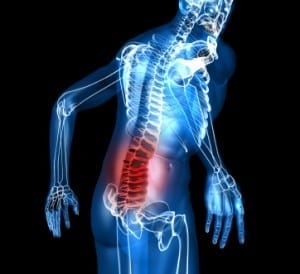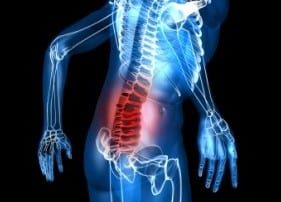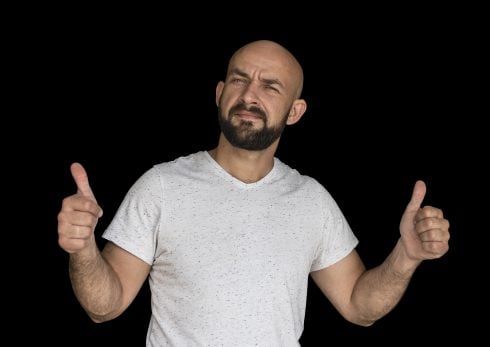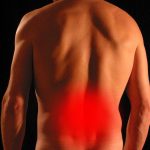DO you stoop over your shopping trolley or lean on your golf bag to relieve back pain? If so, you may be suffering from spinal stenosis.

Stenosis is a medical term that describes a narrowing of a tube or canal and is common in the spinal canal.
This can be a problem that one is born with, and it is associated with certain conditions such as achondroplasia (dwarfism). However, it is more commonly a problem acquired in later life due to degenerative changes within the spine that lead to a narrowing of the spinal canal.
The parts of the spine that cause the stenosis are the intervertebral discs and the facet joints.
The result is a reduced area for the nerves to travel in, as they pass along the spine. The stenosis can cause a profound reduction in the space available for the all of the nerves, or just the space for one nerve as it starts to leave the spinal canal. Hence the symptoms and signs can be mixed.
The classical symptoms of spinal stenosis are activity related pain radiating from the low back region, into the buttocks and down the legs. It can be unilateral or bilateral. This can be associated with numbness and heaviness in the legs. The activities that tend to provoke this are standing and walking.
The ability to undertake both is reduced, sometimes dramatically.
Often, there is little to find on examination in this group of patients. However, on walking, stooping forward is a common feature. The reason for this is to try to increase the space within the spinal canal.
Other medical problems can produce similar features. This is especially true when there is a reduced blood supply to the legs due to vascular issues. Hence, your health care provider should check your foot pulses, when confronted with these complaints.
The management of spinal stenosis depends on the exact cause and the level of symptoms that the patient is suffering. Essentially, it is a quality of life issue. Therefore, one must consider this when planning treatment. An MRI scan is required to confirm the diagnosis.
The first line of treatment consists of physiotherapy and physical conditioning, including if possible, cycling. Cycling can be well tolerated by patients with spinal stenosis, as the position on a bike makes the spinal canal more capacious.
If symptoms are still problematic, pain killers can be employed.
The next level of intervention includes injections such as epidurals.
The evidence for these is mixed.
Finally, a surgical decompression can be performed to increase the space within the spinal canal. This has about a 70% chance of bringing good pain relief and increased function.
Such treatments are available at the Exeter Nuffield Hospital.











